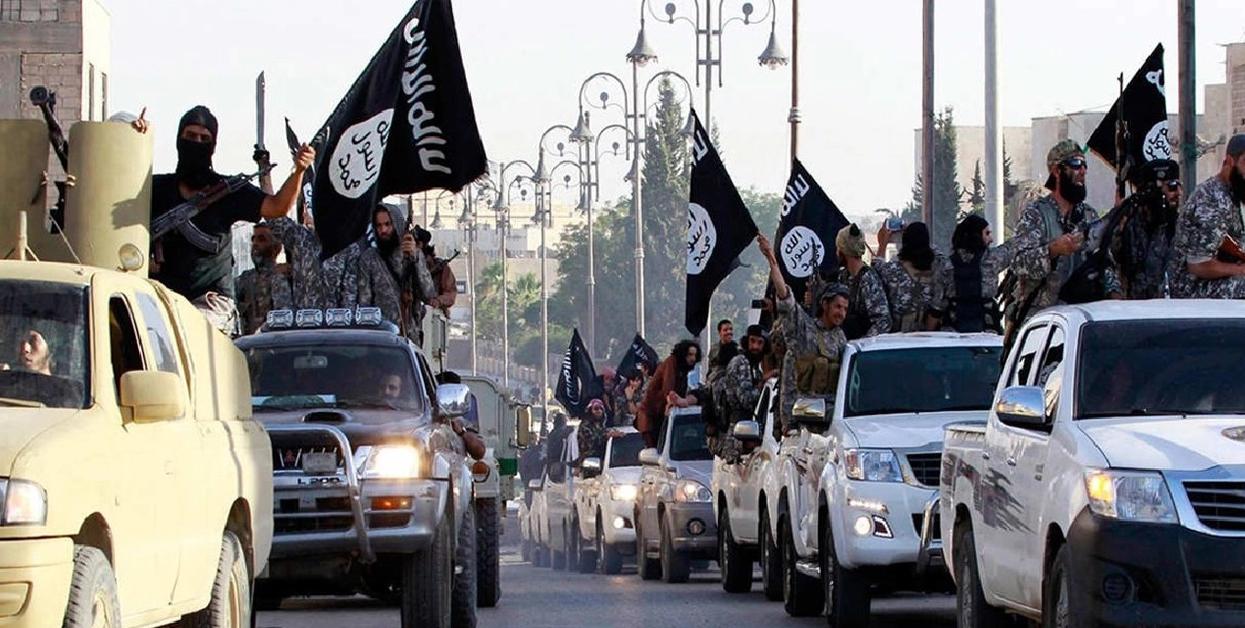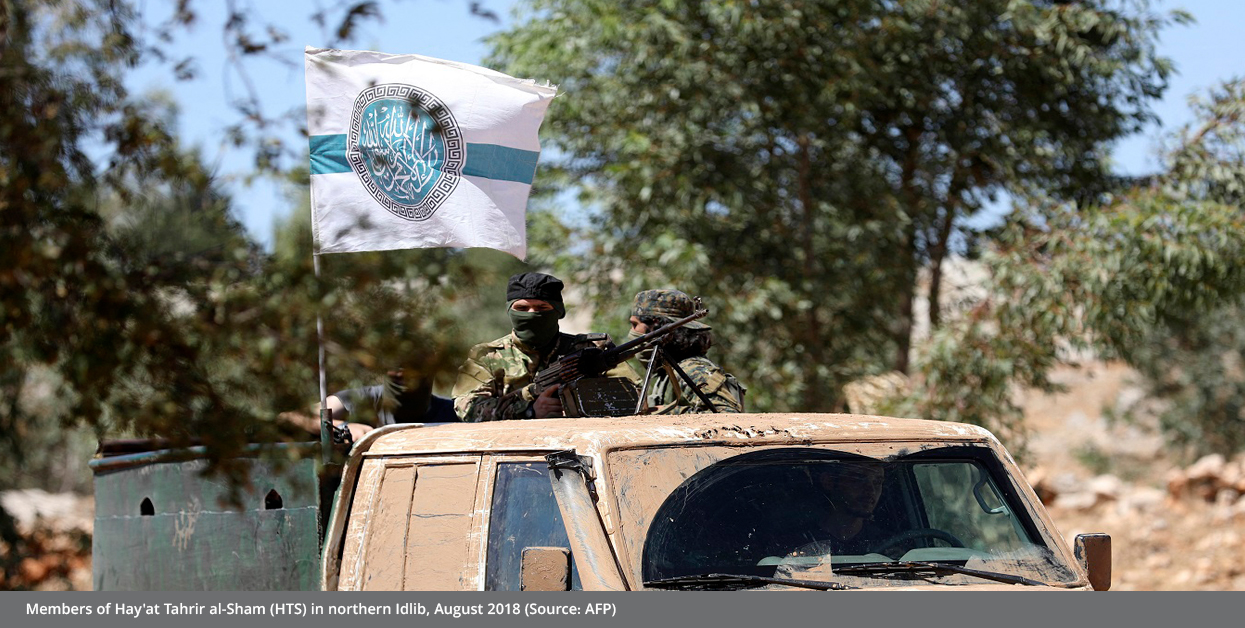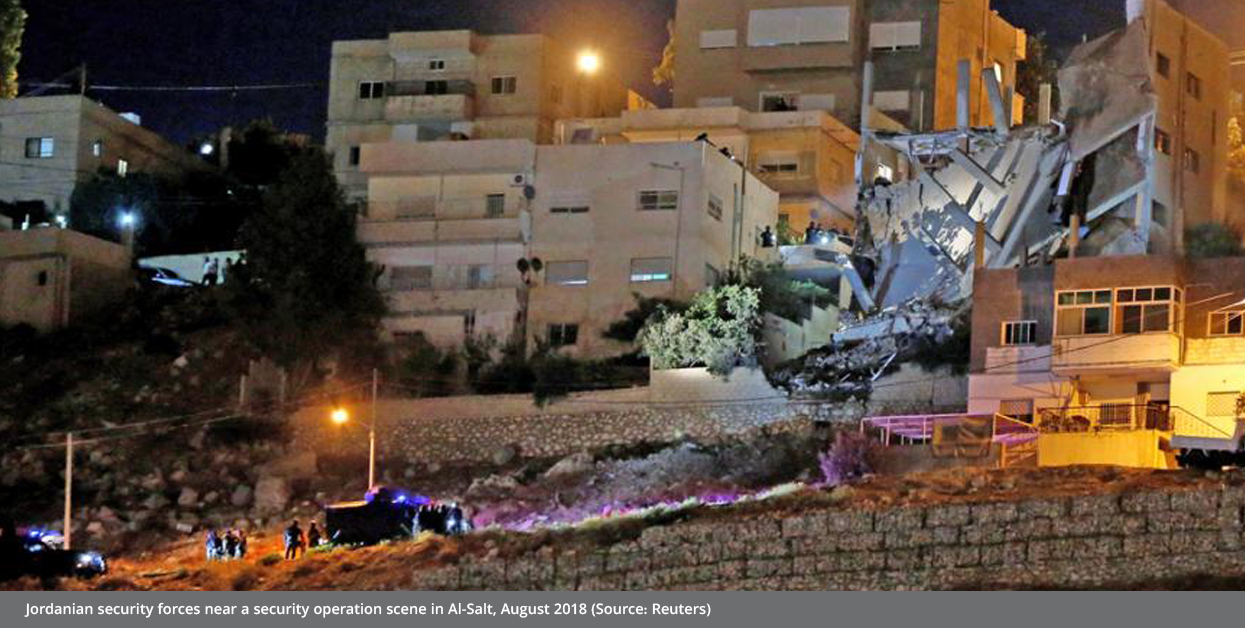The Impact of Taliban's Rise on Jordan, Syria, and Iraq
The Taliban's seizure of control over Afghanistan raises several concerns in light of the impact it may have on other armed movements and groups, in a way that may restore hope and confidence in the ranks of many such groups, to return to their activities taking after the example of Taliban. Hence, this paper examines the repercussions of the rise of the Taliban on terrorist groups in Syria and Iraq, as well as its impact on Jordan.
by Dr. Hani Nsera
- Publisher – STRATEGIECS
- Release Date – Oct 4, 2021

Taliban is back as a movement and as an emirate twenty years after being defeated in October 2001. This year, its interim government was announced on the 7th of September, and observers and analysts all over the world took notice. However, our focus will be on two aspects:
First: Taliban's ability to inspire Islamic groups and movements in the Middle East and abroad, by restoring hope and confidence in returning and providing power again, wherever these movements and groups lost their fallen strongholds, like in Syria, Iraq, Egypt, Libya and recently in Tunisia.
The return of the Taliban after twenty years of defeat was a message of hope for these groups about the possibility of victory, regardless of the strength of their opponents, with their determination to establish Islamic rule and empowering their state to the end, much as the Taliban did. The Taliban's model of success after their fall brings back the emphasis on giving priority to combating the near enemy rather than the distant enemy, the re-empowerment of governance and state centralization, and to avoid attrition of the distant enemy, like the United States and its allies through swift attacks on the enemy targets and allies whatever the losses the attacks might cause. As a result, the Taliban's priorities became: empowering the movement and achieving control over conflict areas.
Second: The concern that the Taliban will not adhere to its commitment to the United States and its neighbors by not using Afghanistan as a base for attacks against them; as well as not using Afghanistan as a safe haven for al-Qaeda, or any other terrorist movement, like it was during the September 11 attacks. We believe that the Taliban learned its lesson and that it has not harbored any terrorist groups that would target its enemies from Afghanistan as it has in the past. This commitment is what allowed it to take over the power after Doha negotiations in January 2021.
We noticed that most Islamic movements and groups, except ISIS, welcomed the return of the Taliban, and rushed to congratulate the movement. We also noticed that the International Union of Muslim Scholars took the initiative to provide consultations to Taliban since the Doha Negotiations, calling on Arab and Muslim countries to recognize, support, and aid the Taliban.
In this paper, we will attempt to trace the first effect which still holds some probability, namely, the effect of Taliban's model success and its return on terrorists and armed groups in three Arab countries. In two of these countries, Syria and Iraq, terrorist groups can be described as hardcore and violent owing to the depth of crisis in both states, while Jordan represents a model for a stable state as well as being one of the most prominent allies of the United States in the region.
1. The Taliban and the case of Iraq
The Taliban's victory in Afghanistan, and its return to power, certainly inspires the terrorist groups in Iraq, which previously controlled large swathes of the country. It also gives them the perseverance and patience to reclaim what they achieved in the past. Al-Qaeda had the chance in 2006 to establish a state in Iraq, but Majalis al-Sahwa (Awakening Councils) destroyed it with US assistance after al-Qaeda lost control over Anbar Province in 2007.
On June 29, 2013, ISIS came with a new pattern and method of influence, and was were able to control six Iraqi provinces where they declared a “caliphate” in Syria and Iraq in 2014. The following year, 25 terrorist groups and affiliated states around the world pledged allegiance to the terrorist organization. This situation continued until 2017 and 2018, when ISIS lost its strongholds in Raqqa and Mosul respectively, followed by the death of Abu Bakr al-Baghdadi in 2019. Today, ISIS is trying to come back, and their hope is bolstered by the success of the Taliban.
While there are differences between the various terrorist groups in Iraq, a common factor is their focus on the empowerment concept and the establishment of the state (i.e. an Islamic and local emirate in the case of the Taliban and an international religious Caliphate for ISIS). Regardless of the disagreements between the Salafi Jihadist ideology of ISIS and Deobandi Sufism of the Taliban, ISIS leadership is inspired by Taliban's ability to push US forces out of Afghanistan. ISIS plans to return to Iraq based on its previous experience in which the Iraqi army abandoned its positions and weapons to a relatively small force of ISIS fighters, giving the terrorist organization control over 40% of the country at the time.

It appears that ISIS's hopes for returning to Iraq, the largest arena of its operations since 2018, are based on Iran’s intervention policies and the presence pro-Iran armed groups in the country, as well as the Biden administration's willingness to withdraw US forces from Iraq if the cost increases, and despite previous indications and decisions regarding withdrawal from Iraq. This may open the door for a return of ISIS, especially as ISIS's activity has returned to some areas in Iraq and Syria.
In anticipation of the American withdrawal, and fearing the strengthening of ISIS again, the French President declared on August 29 that France would remain in Iraq whether or not America leaves. He announced that the French army will continue to fight ISIS. "No matter what choices the Americans make, we will maintain our presence in Iraq to fight against terrorism," said Macron. However, it seems that the French presence will not be enough to deter and prevent the return of ISIS. “In the event that the US withdraws by the end of the year, the French presence may not be enough to deter ISIS from re-emerging,” he said, indicating that there are “thousands of fighters who are still in Iraq and Syria, where they continue to launch rebellion attacks against the security forces and the civilians”.
We may also add that should Iraq continue its ineffective policies and allow corruption to spread throughout its security, military, and economic institutions, as it did in 2013 and 2014, we may witness the rise of a number of terrorist organizations, led by ISIS.
2. The impact of Taliban and terrorist groups in Syria
Like many other terrorist groups in the region, the terrorist groups in Syria also welcomed the Taliban's return as a remarkable response to their inspiring and accelerating return in Afghanistan. It gave hope to the leaders and members of these organizations through the possibility of emulating the Taliban's model and drawing inspiration from it in their own areas, and it provided legitimacy to patience and suffering in the end in order to return after retreat or fall.
These were the sentiments expressed by Haya'at Tahreer al-Sham (Organization for the Liberation of the Levant), in a statement that welcomed the Taliban's takeover of Afghanistan 20 years after being defeated by U.S. forces. This event was cited as an inspiring example of steadfastness and determination from living experiences like those of the Taliban.

Thus, the HTS (formerly known as the Jabhat Fateh al-Sham, and the Al-Nusra Front at its inception) is adopting a localized strategy in Syria akin to that of the Taliban. This was one of the reasons for their disagreement with ISIS, in addition to their desire to establish relations with the countries that sponsored the Taliban Negotiations, as their new more intellectual and political discourse may suggest, with less Salafist and militant tendencies, as they had initially displayed.
It seems that the Taliban learned the lesson after their isolation, their fall, and their eventual return to power over the course of twenty years. It was also understood by the HTS, as well as by other groups in Libya and Iraq, that violence is not a permanent and sustainable option all the time, but merely a step towards negotiation, bridge-building, recognition, and a balancing of power in the process and settlement afterwards.
Indeed, there is a great similarity between the situation of the Taliban and that of the HTS, especially with its own crisis with Russian air strikes, as well as the Syrian government’s restoration of control over large areas of the country. Moreover, circumstances have changed, so HTS is confined to a specific geographic area in Idlib, without the international community knowing how it should be handled, which may depend on how successful the Taliban-US agreement is and how well the Taliban fulfills its obligations.
Therefore, the Taliban is more motivated at the field level in countries experiencing violent conflict and where armed groups and organizations have the power to confront and challenge governments, as is the case in Iraq and Syria. Yet, its return appears symbolic, intellectual, and emotional only to other unarmed organizations or religious groups in the public sphere.
3. Jordan: Weak prospects and cautious anticipation
There is no doubt that the Jordanian landscape is entirely different with regard to terrorism in general, due to the strength and discipline of the security services and the firmly established state institutions. The terrorism index shows that Jordan saw no terrorist attacks in 2020 for the first time since 2011.
Jordan was ranked 57th among low-threat areas, down 7 points from its 64th ranking last year, according to the Global Terrorism Index.
In comparison to many countries in the region, terrorist attacks in Jordan are rare. From 1970 to December 31, 2020, the number of actual terrorist "operations" in Jordan was 133, which resulted in 156 deaths and 300 injuries. Jordan has a maximum of two terrorist attacks per year, based on terrorism sub-indicators.
The last terrorist operation that occurred in Jordan was on February 14, 2019, when two security officers and a Jordanian citizen were killed in two separate explosions that occurred in the province of Balqa. Subsequent investigations revealed that they were buried mines matching the specifications of explosives used by a terrorist cell in the August 2018 terrorist attack in “Fuhais”.

The extremist and Salafi jihadist discourse is still present in Jordan. In fact, several prominent first generation figures of jihadist Salafism were Jordanians, such as Abu Muhammad al-Maqdisi, Abu Qatada al-Filistini, Abu Musab al-Zarqawi and Khaled al-Azzawi, as well as some of the most prominent new generation figures, such as Sami al-Aridi, the most prominent legislator of al-Qaeda affiliated organization, Guardians of Religion, in Syria. However, violent jihadist organizations have disappeared since the Bay'at al-Imam in the 1990s, and if there are ISIS cells, they have all been eliminated in the last few years.
In addition, it appears that the Taliban and Al-Qaeda do not view Jordan as a priority, especially since there isn’t popular support for these groups in the country. Locally, they are limited to a few prisoners convicted of security issues, and not as an organization or armed group, as is the case in neighboring countries. However, fears may come true if these organizations tighten seize control in other countries, because they may decide to expand to establish an emirate, which we see as unlikely.
With this introduction, we explain why the success of the Taliban is not a significant threat to Jordan, despite the fact that Jordan is a key partner in the international coalition against terrorism and operates a military field hospital in Afghanistan to provide assistance to the Afghan people.
Until now, Jordan has remained quiet, both diplomatically and politically, while waiting for the outcome of the situation in Afghanistan. Furthermore, it does not remain passive, but actively participates with the international community in monitoring the Taliban's performance, and establishes a kind of interaction with the strategy of the United States and the international community in this regard.
Conclusion and summary:
Without exaggeration or underestimation, the new Taliban return model has s two main dimensions:
1. Abandoning the past experience and engaging negotiation: By abandoning its past practices that caused its defeat twenty years ago, such as harboring al-Qaeda leaders, and using it to launch operations against the United States and its allies abroad. Instead, it should focus on its local character and reassure its neighbors and the world around it that it will not repeat the previous experience. According to the Taliban's official spokesperson and a number of its representatives, the movement will disengage and abandone al-Qaeda, and is seeking cooperation and proof of its Good faith again. As a result, ISIS accuses the Taliban of apostasy, and declared war against it through its ISIS-K branch. This model may inspire similar terrorist groups to fight it through a new series of al-Qaeda's attacks, or through the vision and approach of ISIS, which aims to establish an international state, confronts the world, and forbids negotiations with it.
2. An orientation to follow the footsteps of political Islam: It seems that the Taliban are following the orientation of political Islam. The political and ideological patronage of some countries has made them realize that they need to distance themselves from extremist groups such as Al Qaeda and shift their inclination toward negotiating, avoiding armed conflict, and seeking international and regional acceptance. As such, we see that the HTS in Syria may fill that role, whereas such movement has been seeking this for long.
In conclusion, we believe that as long as the situation remains as it is and it settles for the Taliban in Afghanistan to achieve its local model, then the influence of the Taliban will remain an emotional one, that does not export danger nor embrace it in the country. And while some terrorist organizations will be encouraged to moderate, others, such as ISIS, may become more extreme.
The opinions expressed in this study are those of the author. In no way does Strategiecs take responsibility for the views and positions of its author on security, economic, political, social, and other issues, and such views and/or positions do not reflect those of Strategiecs.

Dr. Hani Nsera
Writer and Political Expert
 العربية
العربية